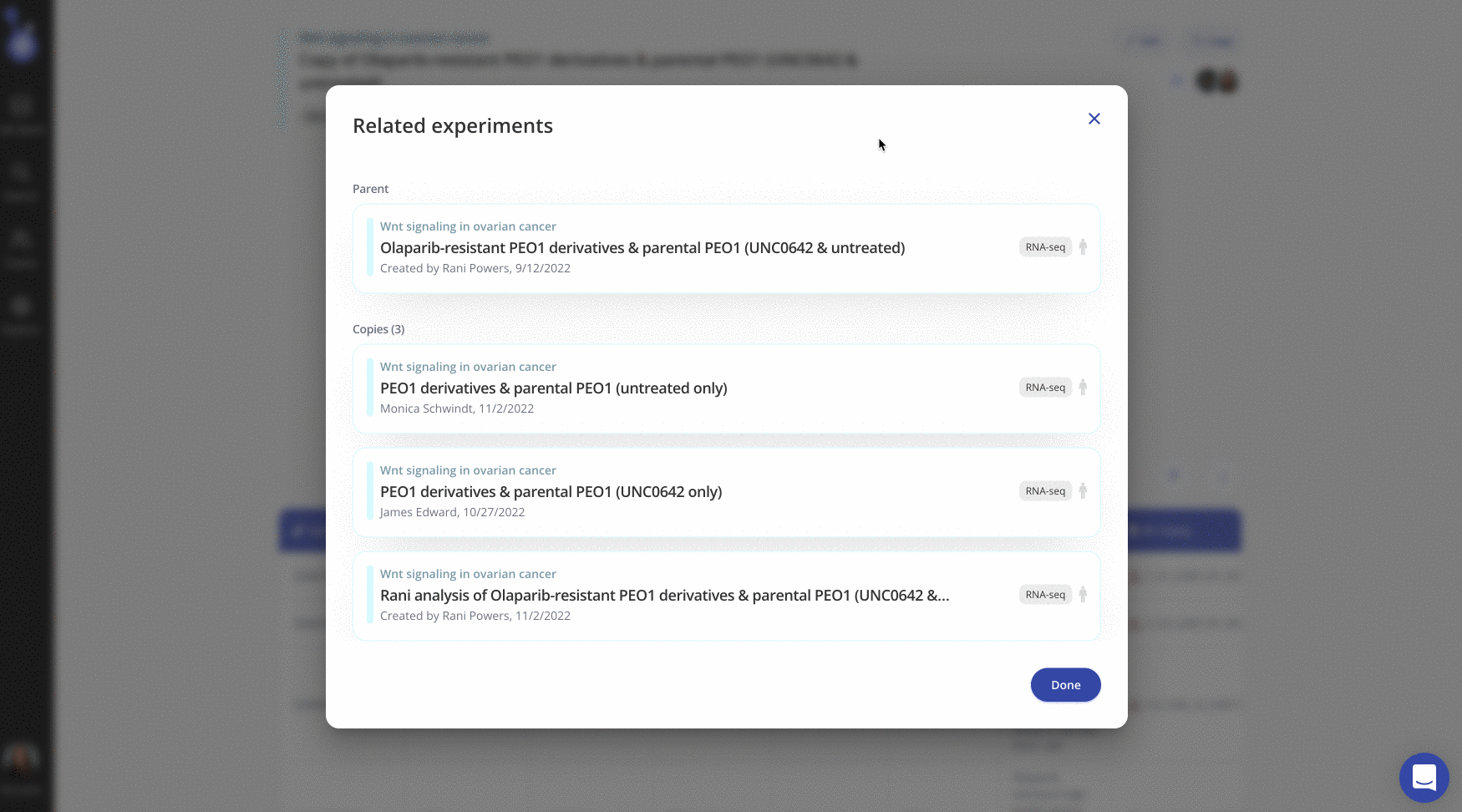Easily track how and when experiments are cloned
Overview
There are many use-cases when it's helpful to clone an experiment in Pluto. Some examples include:
-
Multiple team members want to analyze the same experiment
-
You want to organize your analysis into multiple phases
-
You want to use an experiment as a template for another, similar experiment
When experiments are cloned, the experiments remain linked and their relationships can be explored using experiment provenance.
Provenance
If an experiment has been copied, or was created as a copy of another experiment, a provenance link will appear in the experiment header and footer.

If the experiment that you're viewing was created as a copy of another experiment, the "parent" field links to the original experiment that used to create the current one.

If the experiment you're viewing has been copied, you can see those experiments in the "copies" section along with the name of the person who created the copy.

Any experiment can have a parent and/or multiple copies.
Experiments that have not been copied or were not a copy themselves do not have the provenance link in the header and footer.
